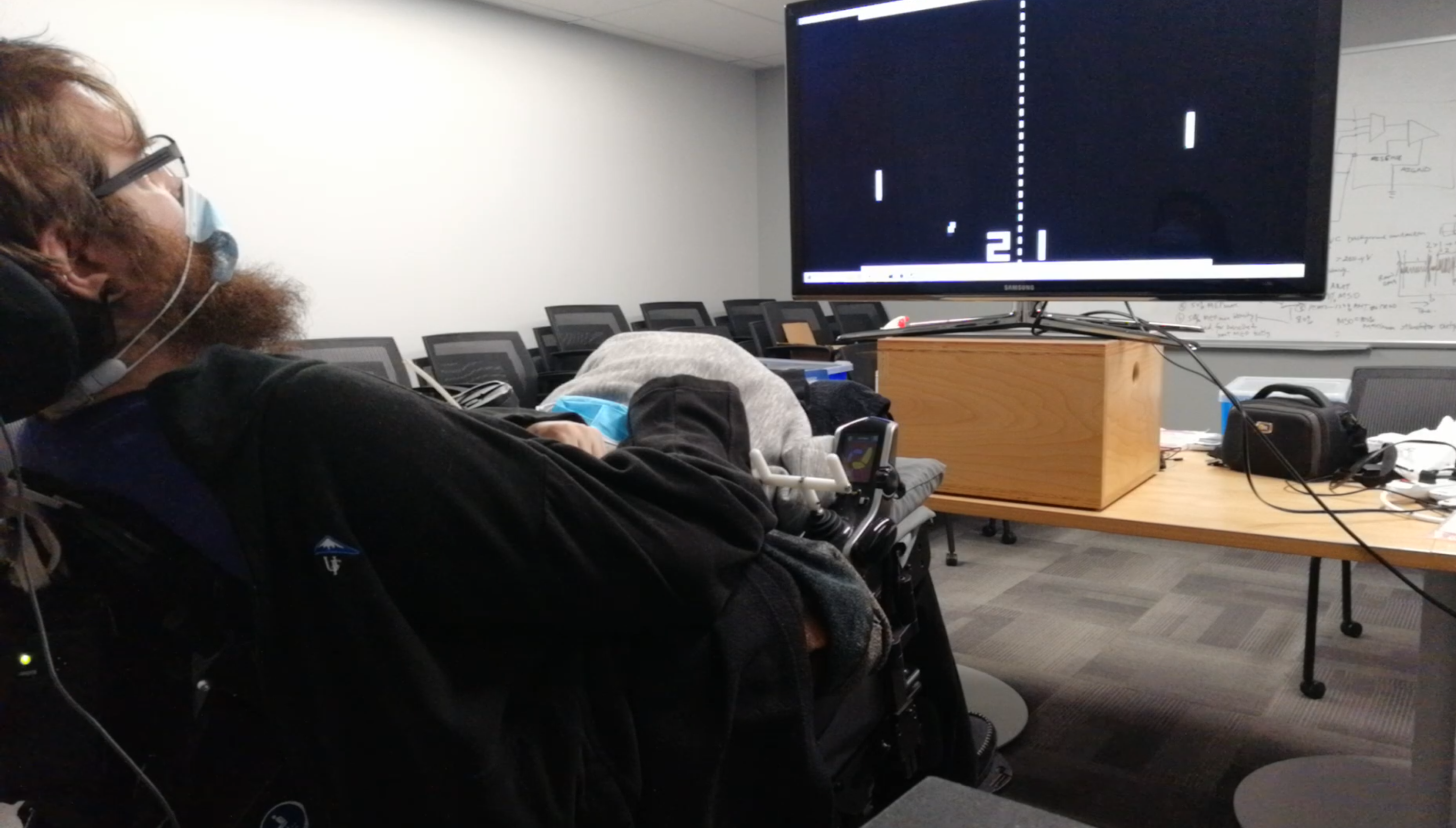Copeland already uses mental commands to play video games including Sega classics like Sonic the Hedgehog. He admits it was a “tough” question whether to challenge Musk’s monkey or not. “I could get my ass beat,” he says. “But yeah, I would play.”
Copeland issued the challenge in an interview and on today’s episode of the national public radio program Science Friday, where he appeared to discuss brain interfaces.
Neuralink, a secretive company established by Musk in 2016, did not respond to our attempts to relay the Pong challenge.

COURTESY OF NATHAN COPELAND
Playing at home
Brain interfaces work by recording the electrical firing of neurons in the motor cortex, the part of the brain which controls movement. Each neuron’s firing rate contains information about movements a subject is making or merely imagining. A “decoder” program then translates the signals into a command that can be conveyed to a computer cursor.
Copeland is one of a handful of humans with an older style of implant, called a Utah array, which he uses in experiments at the University of Pittsburgh to do things including moving robotic arms. Before Copeland performs a task, he begins with a 10-minute training session so an algorithm can map firing signals from his neurons to specific movements. After such a session, Copeland says, he can think a computer cursor left or right, forward or back. Thinking of closing his hand causes a mouse click.
Beginning last March, the Pittsburgh team arranged for Copeland to use his brain implant on his own, at home, to operate a tablet computer. He’s used it to surf the web and draw pictures of a cat with a painting program. Last spring, he was using it six hours a day. “It got me through the pandemic,” he says.

NATHAN COPELAND
The tablet is not particularly powerful, though. And he can only use it with batteries. He’s not supposed to plug his brain into any device directly connected to the electrical grid, since no one knows what effect a power surge could have. “I have encouraged him to be careful what software he puts on it,” says Jeffrey Weiss, a Pittsburgh researcher who works with Copeland. “I don’t have restrictions other than not to break the thing, and don’t get malware on it. It’s just a Windows machine.”
Copeland’s interface was installed by a neurosurgeon six years ago. He has four silicon implants in all. The two on his motor cortex allow him to control a robotic arm used in experiments or a computer cursor. Another two, in the somatosensory part of his brain, allow scientists to send signals into his mind, which he registers as sensations of pressure or tingling on his fingers.
The monkey’s advantage
If a mind match occurs, Neuralink’s primate would have the advantage of a next-generation interface, which the company calls “the Link.” While Copeland has to attach cables to two ports on his skull, Neuralink’s implant is about the size of a soda bottle cap and is embedded entirely in the skull. It transmits the brain recordings wirelessly, via Bluetooth.
“It’s a very promising device, but it’s new, and there are many questions about it,” Weiss says. “No one outside Neuralink has been able to get a look at it.” The company has said it hopes to recruit human subjects, but that will depend on how the implant holds up in animals, including pigs, which Neuralink is performing tests on. “No one knows if it’s going to last six months or six years,” says Weiss.


